Maintaining correct tire inflation pressure is very important since it helps optimize tire performance and fuel economy while over-inflated tires are just as problematic as under-inflated ones.
In fact, driving with under-inflated tires is one of the biggest causes of tire failure, according to the National Highway Traffic Safety Administration.
Besides, under-inflated tires can cause many other problems such as wearing out more rapidly, handling poorly and reducing fuel efficiency.
In addition, over-inflated tires are more susceptible to damage from road irregularities, and this also creates a bumpier ride.
Overfilling your tires is just as dangerous as under-filling them, so it’s important you know what is recommended for your vehicle.
This article will give you everything that you need know about your recommended tire pressure. These include:
Buy Pressure Gauge at Amazon
Recommended tire pressure, where to find it?Since tire pressure is so important to your safety and your car’s overall performance, it is important to know which level of tire pressure is right for your vehicle.
In fact, how much air pressure your tires need depends on several factors, including the type of vehicle, the type of tire and the intended use of the vehicle etc.
Air pressure in tires is measured in pounds per square inch or PSI. You can find your tire pressure both inside your car and on the sidewall of the tire.
How to find recommended tire pressure inside your carYou could find the manufacturer’s optimum or recommended tire pressure for your car on a sticker in the door jam, or in your owner’s manual. Some car models even place the stickers on the trunk lid, in the console or on the fuel door. For best results, look for a placard on the inside of the driver’s door, like the example in the photo below.
How to find maximum tire pressure on the sidewall of your tiresSomewhere on the sidewall of your tire, just below the big, bold letters of the manufacturer, for example, you might have noticed the words ‘Max.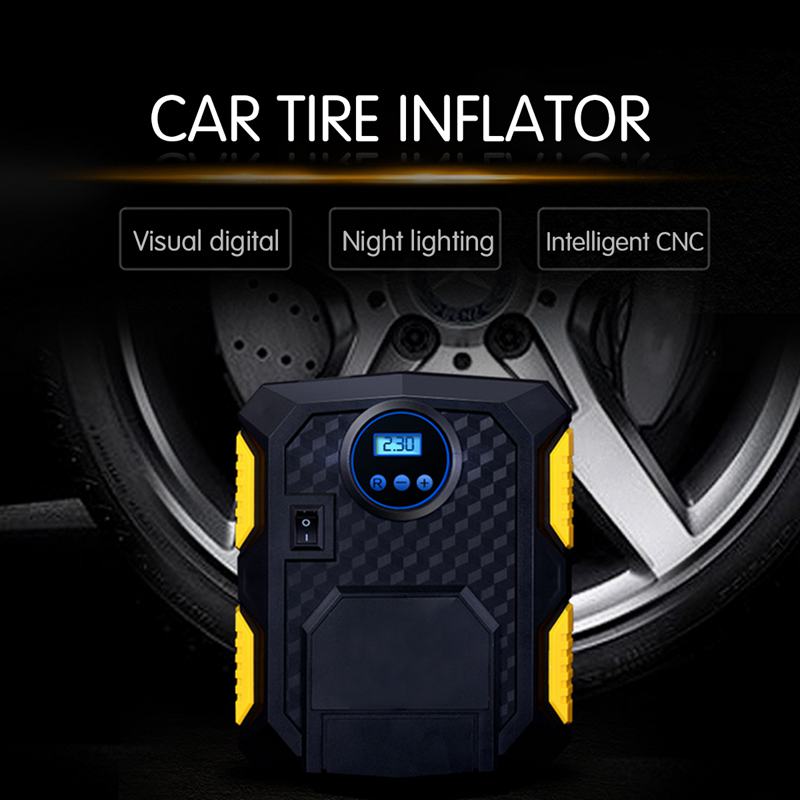 Press. 35 PSI.’ (pounds per square inch).
Press. 35 PSI.’ (pounds per square inch).
That number tells you the maximum cold pressure needed for your tire to carry its maximum load.
Most typical tires require about 32 to 35 pounds per square inch (PSI) of air, says Rod Tate, owner of highly rated Colony One Auto Center in Stafford, Texas.
Large trucks require much larger tires with PSIs of 50 to 60. Heavy-duty vehicles can go even higher. For example, tire in the picture below requires 41 pounds per square inch of air.
However, the tire’s maximum pressure is NOT necessarily the most suitable pressure for every vehicle upon which the tire can be used (almost all vehicle manufacturers’ recommended tire inflation pressures are less than the tires’ maximum pressure).
You really should follow the recommended pressure printed somewhere inside your car or in the manual rather than the maximum pressure. In the next section, I will explain why.
Buy Pressure Gauge at Amazon
Why is maximum tire pressure not the best?If you insist on inflating your tires to the max PSI, there will be more likely that two things below will happen
Since tires inflated to the max cannot give as much on the sidewall, you might see superior cornering, but it could be at the risk of your braking threshold. One quick corner and your back end could slide out.
One quick corner and your back end could slide out.
When your tires are inflated too much, the rubber rounds out at the top of the tire when you are driving, and the center will quickly wear out. You will also reduce your traction and you could even cause a blowout.
Therefore, maximum pressure is not the best, rather, recommended pressure is. I need to repeat here that the pressure listed on the sidewall is a maximum pressure only, but not a recommended pressure. Instead, you should use the air pressure recommended in the vehicle’s owner’s manual or tire information placard label.
How to check your tires pressure?Therefore, maximum pressure is not the best, rather, recommended pressure is. I need to repeat here that the pressure listed on the sidewall is a maximum pressure only, but not a recommended pressure. Instead, you should use the air pressure recommended in the vehicle’s owner’s manual or tire information placard label.
Instead, you should use the air pressure recommended in the vehicle’s owner’s manual or tire information placard label.
After knowing the most appropriate pressure for your car tires, you should check whether your tires have such pressure. In addition, checking the pressure of your tires regularly is one of the most important – and most often overlooked – regular maintenance that you should do to ensure your safety and quality of your driving. Monitoring the amount of air in your tires will let you know if you have a small leak and can help you avoid an unexpected flat tire.
Frequently checking your PSI becomes even more important in the fall and winter, when outside temperatures drop and weather conditions fluctuate causing your tires to lose air more quickly. Generally speaking, your tire will gain or lose one PSI for every 10-degree change in temperature, which means if you have a sudden drop of 30 degrees, you could lose three PSI overnight. If your tires were already low, this could cause tire damage, steering problems or even a flat tire.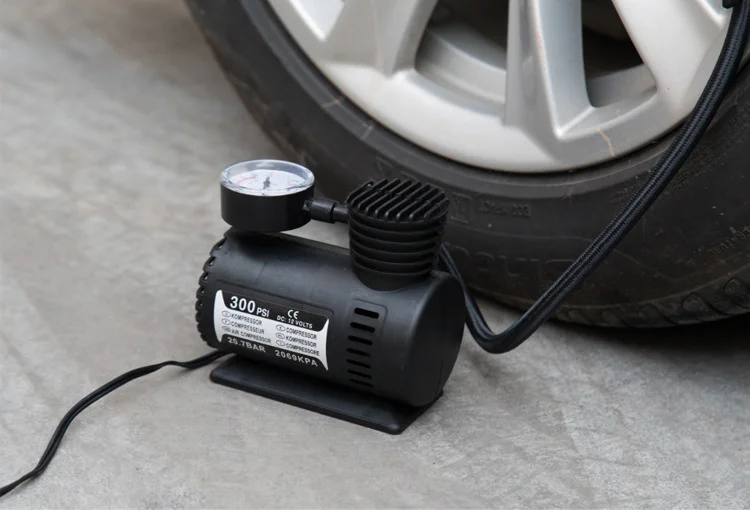
Some experts recommend that you should check the air pressure every time you refuel; others say once a month is sufficient.
How to check tire pressure properly? Checking tire pressure is easy. You can do it right at home or at the gas station. Just be sure you check the pressure when your tires are cold, or have not been driven in several hours. This will give you the most accurate reading.
The most important piece of equipment you need is an accurate tire pressure gauge. You can find battery-operated digital gauges, or more traditional stick-type gauge found at most gas stations. A good gauge should not set you back more than $15 – a worthwhile investment for a longer life for your tires.
Buy Pressure Gauge at Amazon
Make sure you have your manufacturer’s PSI handy when you are checking your tire pressure, and then follow these steps:
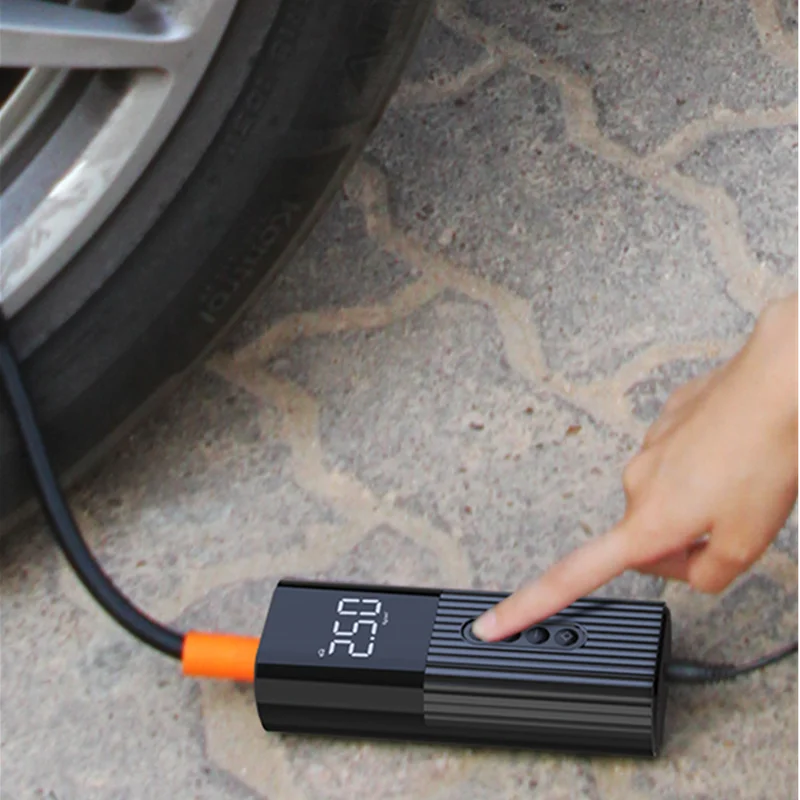
By checking tire pressure once a month, you will get a good idea how they are performing. If your tires are fairly new and continue to leak air, you should consult your dealer or mechanic. You may have a faulty valve or other damage that is difficult to detect which could unfortunately result in the need to replace the tires completely. But with proactive maintenance, you could catch an issue before it becomes a problem, and just end up needing a small repair.
But with proactive maintenance, you could catch an issue before it becomes a problem, and just end up needing a small repair.
Often, it is hard to spot an under-inflated tire until it is too late – in other words, it is completely flat. Of course, you could carry a gauge around at all times to measure the pressure, but that is not exactly convenient. Instead, watch for these signs and symptoms of tires that are under-inflated.
When your tires are under-inflated, your ride can be less smooth than usual. You may even find that it takes longer to brake.
When a tire is not inflated properly, it wears down more quickly. If you notice that one or all of your tires are wearing out faster than usual, it may be because they are under-inflated.
Tires that are under-inflated can make your vehicle quiver and shake, which is not a pleasant driving experience. Under-inflation can even cause tires to become misaligned, with comes with it is own variety of problems.
Under-inflation can even cause tires to become misaligned, with comes with it is own variety of problems.
These are all things that you need to know about recommended pressures of your car tires. After reading this article, you will never confuse about the right pressure of your tires and will know how to check it.
Please share your ideas with me if you have other tips for this.
We all know that routine maintenance is important for everything from our computers to our cars. But sometimes, we fall short. One of the most neglected routine car maintenance tasks is to check tire pressures and inflate them as necessary. That’s why newer cars have tire pressure warning lights, or tire pressure monitoring systems (TPMS), that let you know when you have under- or over-inflated tires (when any tire is 25% underinflated).
Older vehicles don’t have this useful warning light. So, don’t wait for a rupture to check or change a tire.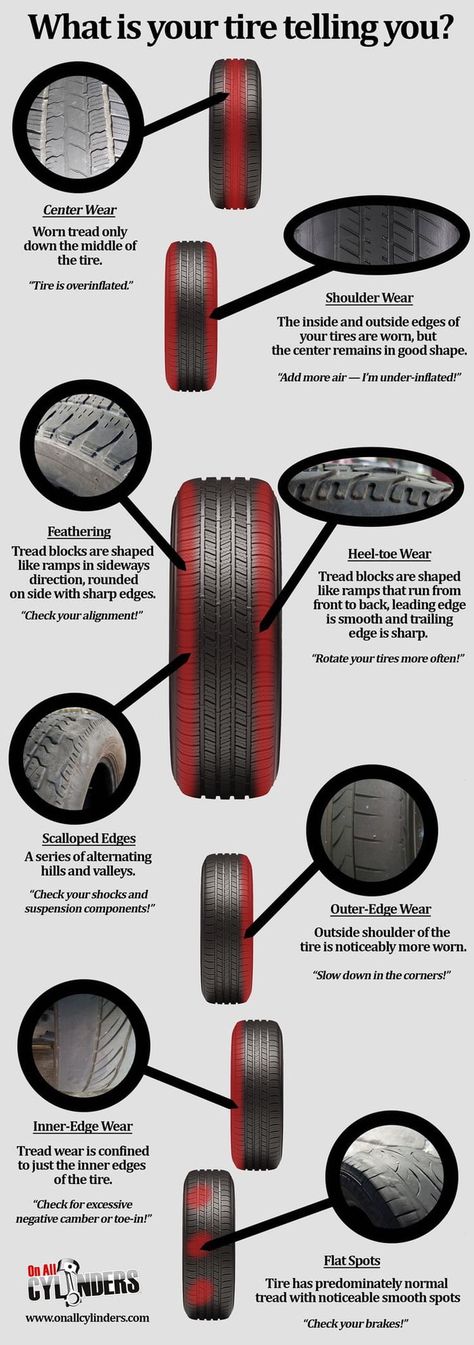 Use this guide to learn how to check the pressure (PSI) of your vehicle tires and how to inflate them to the proper air level.
Use this guide to learn how to check the pressure (PSI) of your vehicle tires and how to inflate them to the proper air level.
The number one reason why you should periodically check your tire pressure is SAFETY, but there are monetary and handling reasons as well:
Proper tire pressure (as recommended by the manufacturer) is needed to drive safely and efficiently. According to a 2009 report by the National Highway Traffic Safety Administration:
“…about 28% of light vehicles on our Nation’s roadways run with at least one underinflated tire. Only a few psi difference from vehicle manufacturer’s recommended tire inflation pressure can affect a vehicle’s handling and stopping distance. Poor tire maintenance can increase incidences of blowouts and tread separations.
Similarly, underinflation negatively affects fuel economy.”
When your tires are underinflated, the tires get fatter, increasing their surface area. This causes high heat generation and extra resistance that could result in higher fuel costs, blown out tires, tire wear, and loss of control.
If you feel like you’re spending too much at the gas pump, it might be your tires. According to the US Department of Energy:
“You can improve your gas mileage by 0.6% on average—up to 3% in some cases—by keeping your tires inflated to the proper pressure. Under-inflated tires can lower gas mileage by about 0.2% for every 1 psi drop in the average pressure of all tires.”
In addition to safety and fiscal concerns, keeping your tires properly inflated will also reduce your impact on the environment. When your tires are properly inflated, you’ll pay less for gas, replace your tires less often, and improve your handling and stopping distance.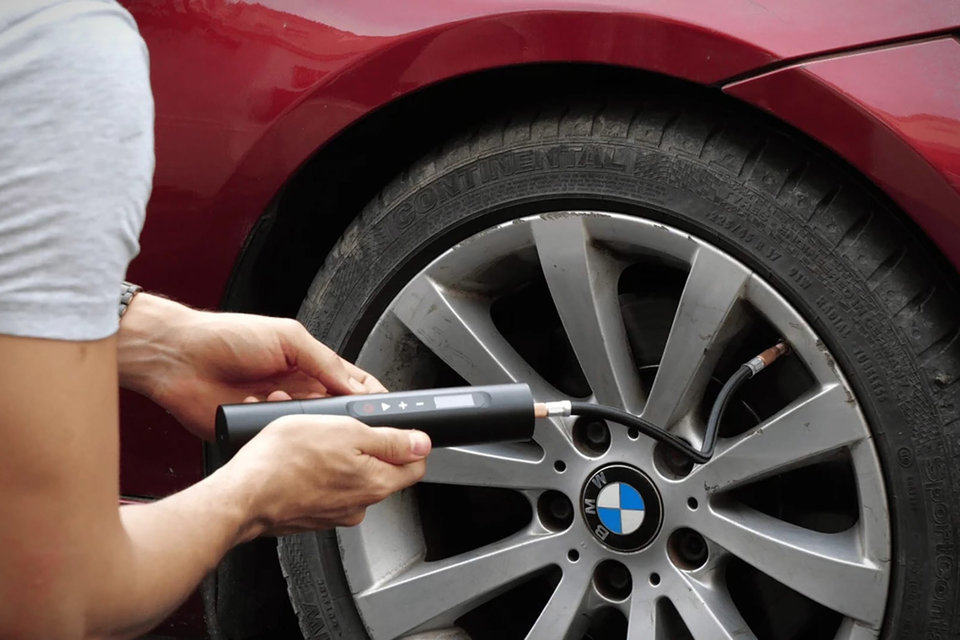 You’ll also feel better knowing that you are emitting less carbon dioxide and other harmful substances into the atmosphere.
You’ll also feel better knowing that you are emitting less carbon dioxide and other harmful substances into the atmosphere.
PSI stands for pounds per square inch. The recommended PSI for your vehicle’s tires is determined by the vehicle’s manufacturer and the recommended tire size.
One big question that we get is whether you should follow the recommended PSI level on the tire itself or the recommended PSI level printed in your owner’s manual or on the placard inside of door edge, glove box door, or fuel door.
Do NOT use the max PSI that is printed on the tire sidewall. This is not the recommended PSI level. The pressure amount on the tire is normally the maximum allowed pressure. The correct PSI level is almost always less than what you see printed on the side of the tire. Over-inflation can lead to poor handling and comfort, overheating and blow outs. Over 40 PSI is a dangerous level for most vehicles!
Make sure you always use the recommended PSI as provided in your owner’s manual and don’t go any more than 5 PSI over the recommended level. You should make sure, however, that your tires are appropriate for your vehicle. You can do this by checking the car’s owner’s manual or the placard that is on the inside of the driver-side door, glove box, or fuel door.
You should make sure, however, that your tires are appropriate for your vehicle. You can do this by checking the car’s owner’s manual or the placard that is on the inside of the driver-side door, glove box, or fuel door.
Most car tire pressure recommendations range from 30-35 PSI.
How often should I check tire pressure?A question in many minds is when is the appropriate time and frequency for checking and inflating vehicle tires.
A quick google search will reveal a variety of different opinions and suggestions. Some say that you should check your tire pressure every 2nd visit to the gasoline station, while others say once every 3-6 months is OK.
Most tire and vehicle manufacturers, on the other hand, will say that you should check your tire pressure at least once every month, or every second trip to the gas pump. Your tires will lose around 1 PSI each for every month that goes by.
Unfortunately, not one answer will fit every situation.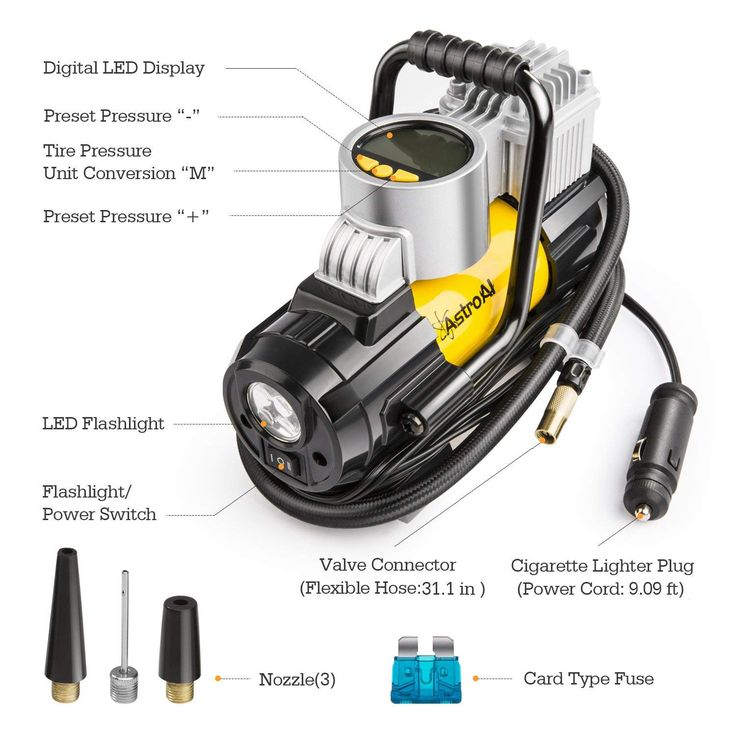 There are several factors that influence how often you should check your tire pressure, including:
There are several factors that influence how often you should check your tire pressure, including:
Did you know that for every 10°-drop in temperature, you lose 1 pound of pressure?
If you have a leaky valve or a small puncture, you will lose air pressure much more quickly. This is one more reason why you should frequently check the tire pressure on all of your tires.
Since tire pressure constantly fluctuates, it’s important to check it periodically (at least once a month) and add air as necessary.
How to Check Tire PressureFinding out the tire pressure of your tires is incredibly easy. All you need is a pressure gauge (click here for additional items you should have in your vehicle).
Just make sure that you are checking your tires when they are relatively cold. If you check your tire pressure after a long drive, you will get an inaccurate reading since heat will temporarily increase the tire pressure reading.
Unfortunately, not all pressures gauges are created equal. Some are better than others. We recommend shelling out a couple extra bucks for a digital reader. The pop-up, stick-type versions are notoriously inconsistent and unreliable. A reliable gauge will be well worth the investment. Prices range from about $5 for the stick-type and about $30 for the digital and dial-type pressure gauges.
You can also check your tire pressure at most gas stations or auto repair shops. Discount Tire offers free tire pressure checks and inflation.
Here are the steps for checking your tire pressure:
It should only take you a couple minutes to check the air pressure of your vehicle’s tires. As soon as you restore tire pressure to the recommended levels, you’ll start experiencing the safety and savings that come with this regular maintenance task.
Watch this video for more information on how to check your tire pressure:
How to Inflate TiresHere are the steps for adding air to your tires:

 It will be pretty noisy.
It will be pretty noisy.
Remember, just one drop in PSI can lower your gas mileage by about 0.2%. For every 3-4 PSI units that your tire is underinflated, you are burning around 1% more fuel.
If your tires are flat, then you probably have a leak. Add air and see if you can drive around without the pressure dropping. If you hear air escaping the tire while you are filling up, then it’s time to replace the tire.
Tip: Learn how to use the air pump properly first. Some automatic air pumps at gas stations have a handle/switch that you need to depress in order for the air to flow. When you let go of the handle, a tire pressure gauge will pop out showing you the tire pressure. At the same time, air will be slowly released. If your air pump has this kind of handle, then you will want to hold down the handle for most of the time, periodically releasing it to check the pressure reading. Consult your own tire pressure gauge for accuracy.
If your air pump has this kind of handle, then you will want to hold down the handle for most of the time, periodically releasing it to check the pressure reading. Consult your own tire pressure gauge for accuracy.
If you check your tire pressure at least once a month as recommended, you’ll also get a good idea of the general condition of your tires and when you should replace them.
We recommend using the penny test:
Source: bridgestonetire.com
Click here for more car maintenance tips. Click here for car winterization tips.
Click here for car winterization tips.
Auto Simple wants you to find a vehicle you love at a price you can afford. We carry a large selection of hand-picked, Certified Pre-Owned vehicles, all with a 6 month/6,000-mile Powertrain Warranty.
If you have any questions, don’t hesitate to speak with one of our Online Specialists or give us a call:
Chattanooga, TN – (423) 551-3600
Cleveland, TN – (423) 476-4600
Dayton, TN – (423) 775-4600
Dalton, GA – (706) 217-CARS (2277)
Follow us on social media for more useful information on buying, selling, and maintaining vehicles: Facebook, Twitter, Youtube, and Google+.
1. Tire and tire pressure recommendations
2. Pressure unit correspondence table
3. Why are deviations in tire pressure dangerous?
Why are deviations in tire pressure dangerous?
- Risks of insufficient tire pressure nine0005
- Risks of high tire pressure
4. How does tire pressure affect driving comfort and safety?
- Strengthening due to pressure
- Tire pressure for driving on the highway
nine0002 - Off-road pressure- Pressure and fuel economy
5. How does tire pressure depend on the season?
- Winter tire pressure
- Tire pressure in summer
nine0002 6. How to check tire pressure?7. How often should blood pressure be measured?
Headed out on the road? Check tire pressure. Permanent advice, which, alas, is often forgotten. In the meantime, properly inflated tires make driving comfortable, driving safer, and tire life longer. What should be the pressure? What are the dangers of over-inflated or under-inflated tires? We have collected answers to all questions, as well as useful tips, in one article. Everything written below will help you not only make your trip safe, but also save your budget. How? Read and level up. nine0005
In the meantime, properly inflated tires make driving comfortable, driving safer, and tire life longer. What should be the pressure? What are the dangers of over-inflated or under-inflated tires? We have collected answers to all questions, as well as useful tips, in one article. Everything written below will help you not only make your trip safe, but also save your budget. How? Read and level up. nine0005
What should be the pressure?
Recommendations of car and tire manufacturers
So, let's start with the banal. Each car manufacturer has standards and recommendations for the level of inflation pressure in tires. It's always best to stick with them. You can find the numbers you need:
* In the vehicle owner's manual
* On a special sticker inside the car (usually on the car door, B-pillar or gas cap) nine0005
* In the form of a QR code (relevant for the latest models, especially premium ones; the sticker with the code is located in the same places)
These cheat sheets contain all the information you need.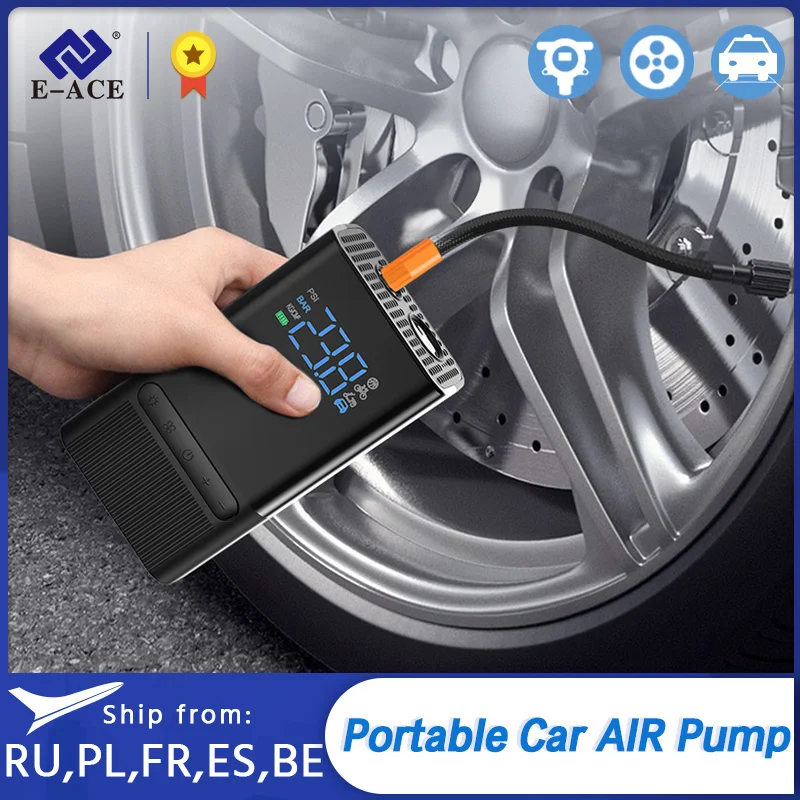 The manufacturer stipulates not only the optimal level of internal tire pressure, but also the limits to which it can be increased or decreased relative to the norm. The amount of pressure depends on the size of the tires, on some cars the recommended pressure for the rear and front wheels differs. To summarize, for most passenger cars, the recommended constant tire pressure ranges from 2-2.5 atmospheres. This is the norm not only for a comfortable and safe ride, but also for fuel economy. nine0005
The manufacturer stipulates not only the optimal level of internal tire pressure, but also the limits to which it can be increased or decreased relative to the norm. The amount of pressure depends on the size of the tires, on some cars the recommended pressure for the rear and front wheels differs. To summarize, for most passenger cars, the recommended constant tire pressure ranges from 2-2.5 atmospheres. This is the norm not only for a comfortable and safe ride, but also for fuel economy. nine0005
Tire manufacturers also indicate pressure on the label. But there is an important point here! The number on the sidewall of the tire is not the norm to strive for, but an indicator of the maximum pressure that the tire can withstand and not burst.
Correspondence table for pressure measurements
Tire pressure is measured in two units: atmospheres (or bars) and psi. Bars are the most common, it is in them that the pressure is measured in gauges in tire shops and gas stations. However, in some countries it is psi that is used - pounds per square inch. To avoid confusion, it is worth remembering that one psi corresponds to 0.068 bars. nine0005
However, in some countries it is psi that is used - pounds per square inch. To avoid confusion, it is worth remembering that one psi corresponds to 0.068 bars. nine0005
Why are deviations in tire pressure dangerous?
Tire pressure affects how long tires last and how quickly they wear out. And not only. If the tires are over-inflated or, conversely, under-inflated, then their critical properties such as traction, vehicle directional stability when driving, handling (especially when cornering and on uneven surfaces), braking distance and resistance to aquaplaning will change. nine0005
Why is this happening? To answer this question, elementary knowledge of physics is enough. With the right gas pressure from the inside to the tire, the tire retains exactly the shape that was intended by the manufacturer. The contact patch of the tire with the road is also optimal, because the tread at optimal pressure also retains its shape and the necessary degree of flatness so that its pattern moves along the surface as it should (see figure).
- Risks of insufficient tire pressure
Tires with low internal pressure or, in simple terms, under-inflated tires lose their shape when driving. They become softer, more pliable, and the weight of the car, especially at speed and when cornering, makes them literally sag and sag. What does it threaten?
Uneven wear. The side treads wear out faster than the middle tread because the tire has more contact with the road due to tire deformation. nine0005
The side treads wear out faster than the middle tread because the tire has more contact with the road due to tire deformation. nine0005
Rolling resistance increases, which causes the tire to heat up more.
Acceleration time is increased.
Increased fuel consumption.
Threatening the integrity of the tire carcass and its rubber, especially in the side parts, which can lead to sidewall rupture. This can be warned by a worn strip that appears around the entire circumference of the tire - this is evidence of chafing of the cord threads. nine0005
Risk of tire dismantling. An under-inflated tire may come off the disc seat.
Tires deformed by long-term use at low inflation pressure become unsuitable for further use. Even if the pressure in them is brought to normal, the risk of rupture in the weakened parts remains. If you want to avoid unnecessary expenses - do not strain the tires.
- Risks of high tire pressure nine0005
With increased tire pressure, the part of the tread that should be flat and provide reliable traction becomes convex, literally swells up like a ball. As a result, the contact patch of the tire with the road is much smaller than planned by the manufacturer. Why is it dangerous?
The tread wears unevenly, faster in the middle than on the sides.
Decreased grip and handling. nine0005
Due to the reduction in the area of contact between the tire and the road, the braking distance increases.
If the tire pressure is too high, the tire runs the risk of exploding.
Long driving on tires with high pressure overstresses the cords, such a tire will last much less.
The deformed contact patch of the tire with the road interferes with the effective removal of water, as a result, hydroplaning can occur on a wet surface. nine0005
nine0005
How does tire pressure affect driving safety and comfort?
Sometimes the pressure in the tires still needs to be lowered or increased. It depends on certain driving conditions or the quality of the surface. For a short period of time, this will improve the driving characteristics of the car and driving safety. Of course, everything is within the manufacturer's recommendations, however, even small changes can greatly affect driving comfort. nine0005
- Increasing tire strength due to pressure
A slight increase in pressure can slightly raise the "tensile strength" of tires under excessive loads. Yes, overloading the car is bad, but sometimes you have to, especially when the summer season is on the nose. This is especially true for a car with an attached trailer, which increases the load on the rear wheels. Tires at least on the rear axle in this case, it is better to additionally pump up 0.2-0.3 bar. From the additional load, they still “sag” a little.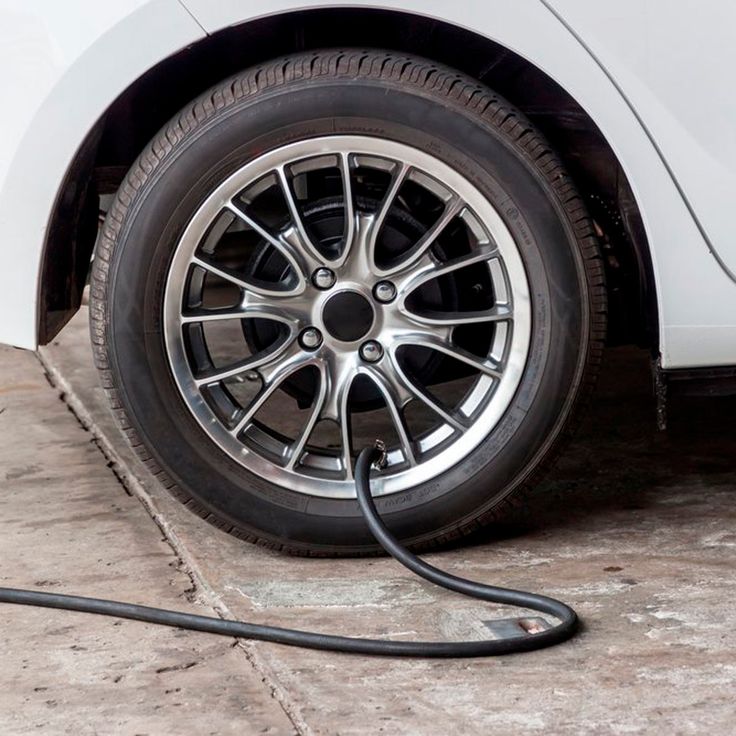 nine0005
nine0005
- Tire pressure for highway driving
Long and high-speed races on highways for tires are a strong test. Therefore, even the manufacturers of many cars advise in the operating instructions: before a long trip on a flat road (more than an hour at a speed of 115 km / h), it is better to slightly increase the tire pressure. The increase should be small - 0.2 atmospheres (bar). This recommendation also takes into account the fact that the pressure in the tire itself will increase from the heating of the tire. nine0005
- Off-road pressure
Tire pressure adjustment can help you get through difficult terrain. Driving on sand, snow, mud and wet grass will be easier if you lower the tire pressure a little. This maneuver will increase the contact patch of the tire with the surface, increase grip, and the car will be less likely to get stuck and skid. The main thing is to keep a low speed, and when the difficult section is left behind, restore the correct tire pressure again.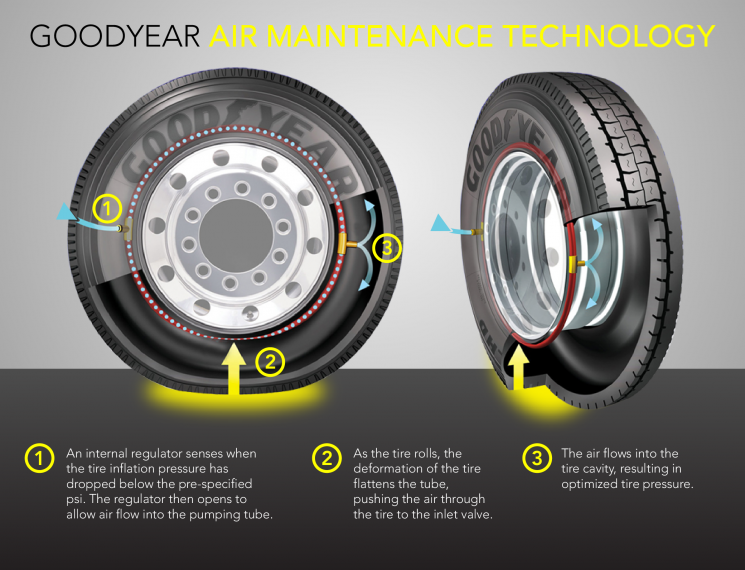 nine0005
nine0005
- Pressure and fuel economy
There is a myth that when the tire pressure is higher than normal, fuel consumption decreases. It really goes down, but it's not worth it. The savings will be only less than 5%, but driving comfort will drop dramatically. The fact is that the tire becomes stiffer under excessive pressure, so that you and your passengers will feel all the bumps and bumps in the road. The point in saving on fuel is also lost because with constant driving on overinflated tires, the tires themselves wear out faster and more likely to require replacement costs. nine0005
How does tire pressure depend on temperature?
In winter and summer, the pressure in car tires may differ. This directly depends on the physical properties of the gas with which the tires are inflated. We all remember from school that at high temperatures, gas tends to expand, and at low temperatures, on the contrary, it contracts. Therefore, even if the tires were inflated recently, with temperature changes, this very pressure will change, and noticeably. On average, for every 10ºC, the air pressure in the tires changes by 0.1 bar. nine0005
On average, for every 10ºC, the air pressure in the tires changes by 0.1 bar. nine0005
- Tire pressure in winter
It is especially difficult to maintain constant tire pressure during cold snaps. Therefore, in the fall, changing summer tires to winter tires, checks must be approached carefully. It should be checked during the first frost and after the temperature drops well below zero. Most likely, the tires will need additional pumping. Keep in mind: in a warm garage or in a closed parking lot, it is difficult to catch the pressure drop in the tires. It will happen when you go out into the cold. Therefore, it is better to check and inflate tires after parking in the open air. nine0005
- Tire pressure in summer
Summer tire inflation is recommended to be carried out in a warm spring with a margin for the summer and at the end of summer before changing seasonal tires. However, this does not exempt from checks. The fact is that the warmer it is, the more the air in the tires expands - and the sooner it “comes out” through the chambers.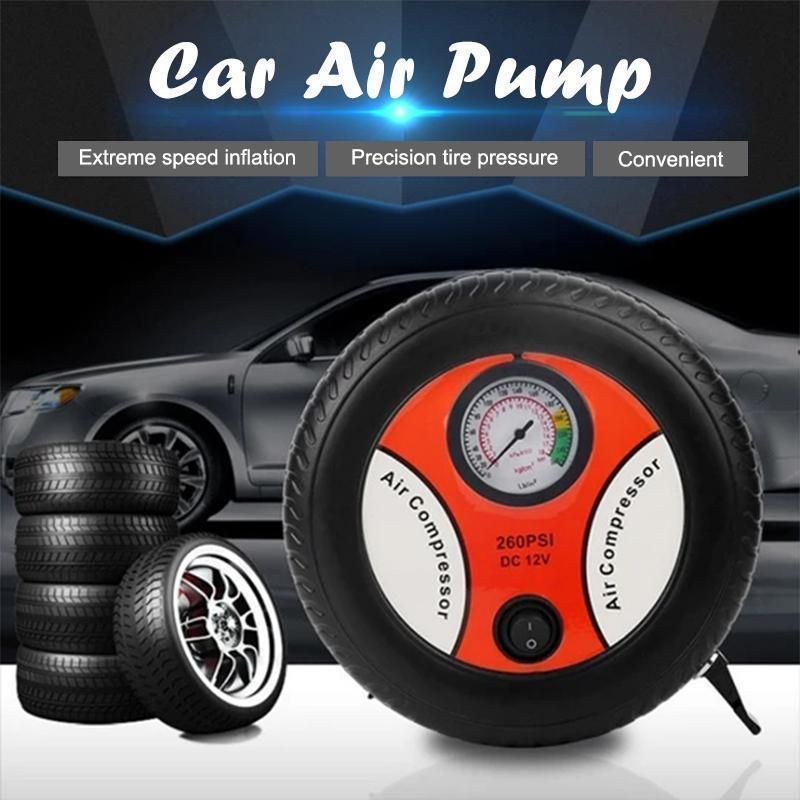 In addition, pressure can drop with even microscopic tire damage, and in summer this happens even faster.
In addition, pressure can drop with even microscopic tire damage, and in summer this happens even faster.
How to check tire pressure? nine0004
1. The pressure gauge is your best and indispensable friend in this matter. It can be either portable, up to the size of a key fob, or stationary, installed at a gas station, in a tire fitting room or other specialized car service facilities.
You can buy your own car pressure gauge at any auto parts and accessories store. They are pointer, mechanical or electronic. Not only its price, but also its accuracy depends on the class of the pressure gauge. The pressure gauge is mandatory installed on the compressor for pumping wheels - it is he who allows you to adjust the pumping process and the required amount of air supplied to the tire. But it can also be used separately to determine the existing pressure. nine0005
It is easy to check the accuracy of the manometer. Use it immediately after the tire fitting, where you will adjust the inflation pressure in the tire to the desired value, and just check the readings.
2. Automatic tire pressure monitoring systems. For example, premium cars are equipped with direct pressure sensors that are installed directly into the wheel rim. Sensors measure tire pressure and temperature, and the information is sent to the on-board computer. When pressure indicators change, a warning signal is received, or information is displayed on the computer panel in digital and alphabetic form. Similar direct control devices can be purchased and installed separately: pressure control sensors are installed in the wheels, and the receiving device is installed in the passenger compartment. nine0005
A similar system is part of the anti-lock braking system (ABS), but it works differently. The ABS system does not measure tire pressure, but wheel speed, and draws conclusions. The fact is that when the pressure decreases, the diameter of the tire changes, and the wheel starts spinning faster in order to “catch up” with the rest. The system captures these changes, checks them against valid values stored in memory, and informs you of the mismatch.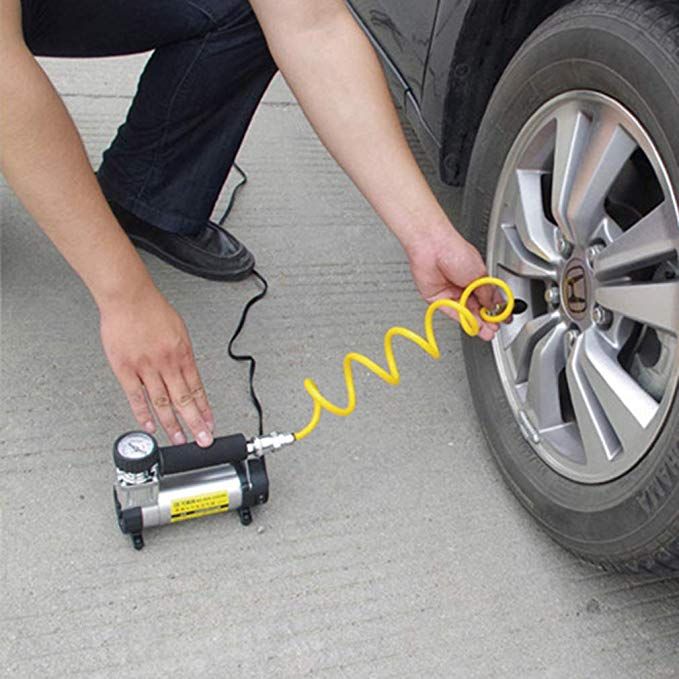
3. Indicator caps are screwed onto the tire valves. These pressure sensors are transparent on top, and this part serves as an indicator: the change in color indicates the current state of the wheels. The obvious disadvantages of such a control system are that it is impossible to evaluate the change in tire pressure during movement with its help; a stop and a visual inspection are necessary. nine0005
How often should the tire pressure be checked?
Manufacturers recommend checking tire pressure once a month. But this is the minimum. Of course, under extreme operating conditions and sudden changes in temperature, it is not worth the risk and you need to check more often. And before a long journey or planned loads, checking the internal pressure in the tire is completely mandatory, even if it is extraordinary.
nine0002 Important: pressure measurement is carried out only on cold tires - that is, those that have remained without movement for at least 5 hours.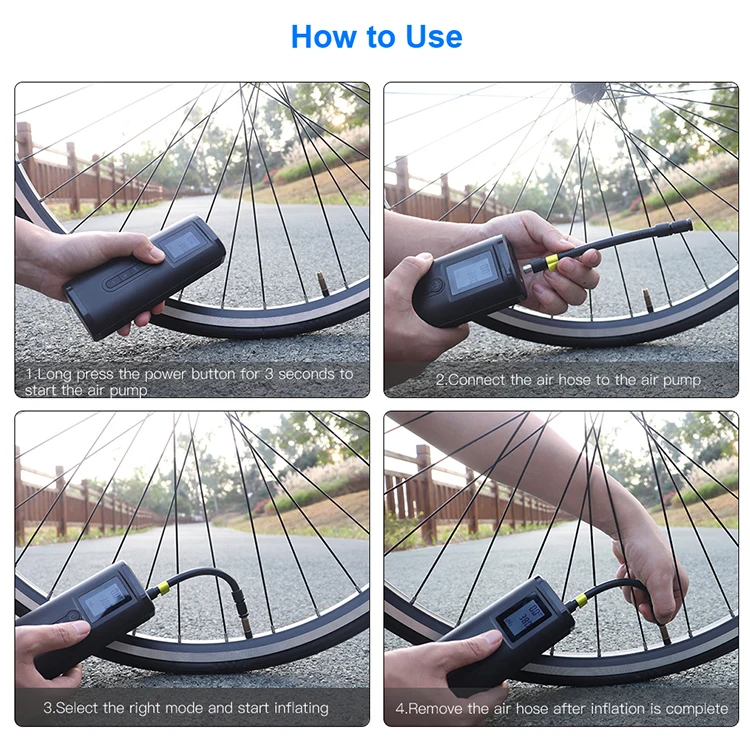
5 most important findings
1. Tire pressure affects ride comfort, vehicle handling and your own safety.
2. Under-inflated tires wear out faster, can burst at the side and heat up much faster when driving. With prolonged use of tires with reduced pressure, tires are completely deformed so that they can no longer be restored. nine0005
3. Overinflated tires lose reliable grip, and the car loses controllability. In addition, when driving on overinflated tires, the braking distance is greatly increased, and each bump becomes more noticeable.
4. Check tire pressure at least once a month, and definitely before every long trip. A pressure gauge or automatic tire pressure monitoring systems will help with this. The pressure check is carried out on "cold" tires that have not been on the move for at least 5 hours. Temperature fluctuations, frosts, long trips in the summer and overheating of tires are an extra and important reason to double-check tire pressure. nine0005
nine0005
5. Small changes in tire pressure can help you with excessive loads or off-road. But such changes should be short-term, after which the pressure must be restored to the norm recommended by the manufacturer.
What should be the optimal pressure in car tires. What to do if less or more than the nominal. How much to “pump” and how to do it correctly - with or without a load. Should it be different in winter or summer? nine0005
The wheel of a car with normal air pressure is in full contact with the road surface. There is a uniform wear of the profile and a better grip is provided. If the pressure is reduced, then the tires will hum, when pumped - whistle.
It becomes more difficult to control the car on the road, it will bounce in the pits. In overinflated tires, the tire becomes hard and the grip surface is significantly reduced. It can be damaged by a sharp hole, besides, the tread wears unevenly on an overinflated tire, its service life decreases, and driving comfort decreases. nine0005
It can be damaged by a sharp hole, besides, the tread wears unevenly on an overinflated tire, its service life decreases, and driving comfort decreases. nine0005
The main disadvantage of overinflated tires is that they increase the stopping distance of the car. This is due to the smaller area of contact with the road surface. They are more sensitive to steering control, but increase the stability of the car in corners. For this reason, the pressure in the tires of sports cars is higher than usual. Also, when the car is fully loaded, manufacturers advise to pump up the rear wheels a little (by 0.2 - 0.3 bar).
The fuel consumption of the car will increase, and the tires wear out faster. In addition, the angle of inclination of the wheel changes, while the internal structure of the tire is weakened, because. the center of the tire is slightly pressed upwards. Optimum transmission of force to the road is carried out only by the edges of the tire. nine0005
Low pressure increases the internal temperature of the tire, which increases resistance. This leads to its complete destruction. As a result, fuel consumption increases by up to 5%, and tire wear by 25%.
If a driver drives 20,000 km per year on uninflated tires, he will need an additional 540 liters of petrol per year. The car is less stable in corners, has a longer braking distance, and the wheels are less steerable, which can lead to a skid.
Each car model has its own nominal tire pressure in winter and summer. It is written on a sticker that is attached to the inside of the door on the driver's side, on the glove box lid, on the back of the gas tank hatch, in the spare wheel niche. When pumping up the wheels, be guided by this particular figure. They can also be found in the vehicle's owner's manual.
Normal tire pressure in a modern car is in the range of 2 to 3 bar. You need to check it before the trip, when the tire is cold. When the car is moving, due to the friction of the wheels with the road, the temperature rises, the pressure increases. To find out the optimal value, you need the car to stand for several hours, and preferably all night. nine0005
At negative air temperature, for every 10°C relative to zero, the pressure drops by 0.1 bar. In hot weather it rises. 1 bar is approximately equal to 14.5 psi, 0.9896 atmospheres or 1 kg/cm2.
Do not inflate to the pressure indicated on the tire. This figure indicates the maximum value that the tire can withstand. Read more in the article about marking and designations. Also pumping with nitrogen - does not give any advantages.
Check the pressure with a pressure gauge. It is tightly inserted into the open nipple. If you hear a whistling sound, it means air is escaping from the tire. Firmly press or screw the pressure gauge into the nipple until the end. nine0005
It turns out that it is impossible to accurately set the pressure in the wheel using compressor pressure gauges.